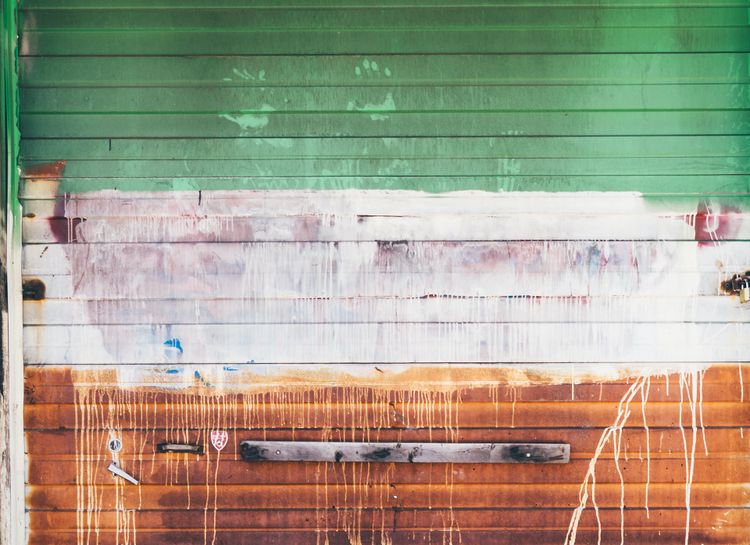How whisky is made
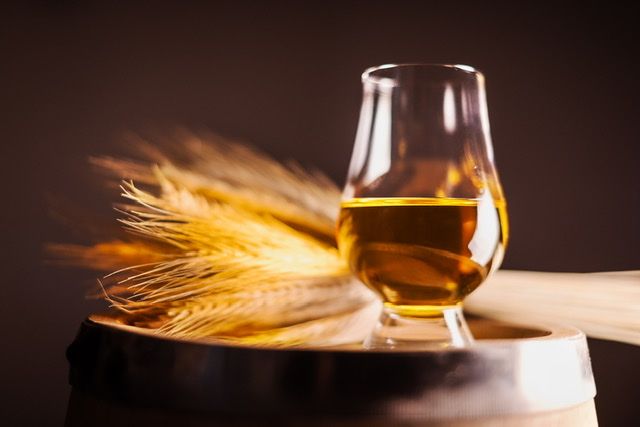
A fitting way to kick off this newsletter - let’s look at how whisky is made.
In a nutshell, the whisky-making process takes the following path: start with a grain (usually barley, corn, rye, or wheat, depending on the particular whisky being made), ferment it to create alcohol, distil the alcoholic liquid; age it in a wooden cask, blend it, and bottle it.
Whisky is not the only spirit that is created via the distillation of an alcoholic liquid. In the case of whisky, the alcoholic drink being distilled is beer, which results from fermentation of the grain. For brandy, it is wine that is distilled. And, in the case of rum, it is sugarcane molasses or sugarcane juice.
Now for a brief overview of how whisky is made. There will of course be variances here and there, depending on the type of whisky being made.
These are the main stages in the production of whisky:
- Malting
- Mashing
- Fermentation
- Distillation
- Ageing (or Maturation)
- Blending
- Bottling
So let's take a look at each of these steps.
Malting.
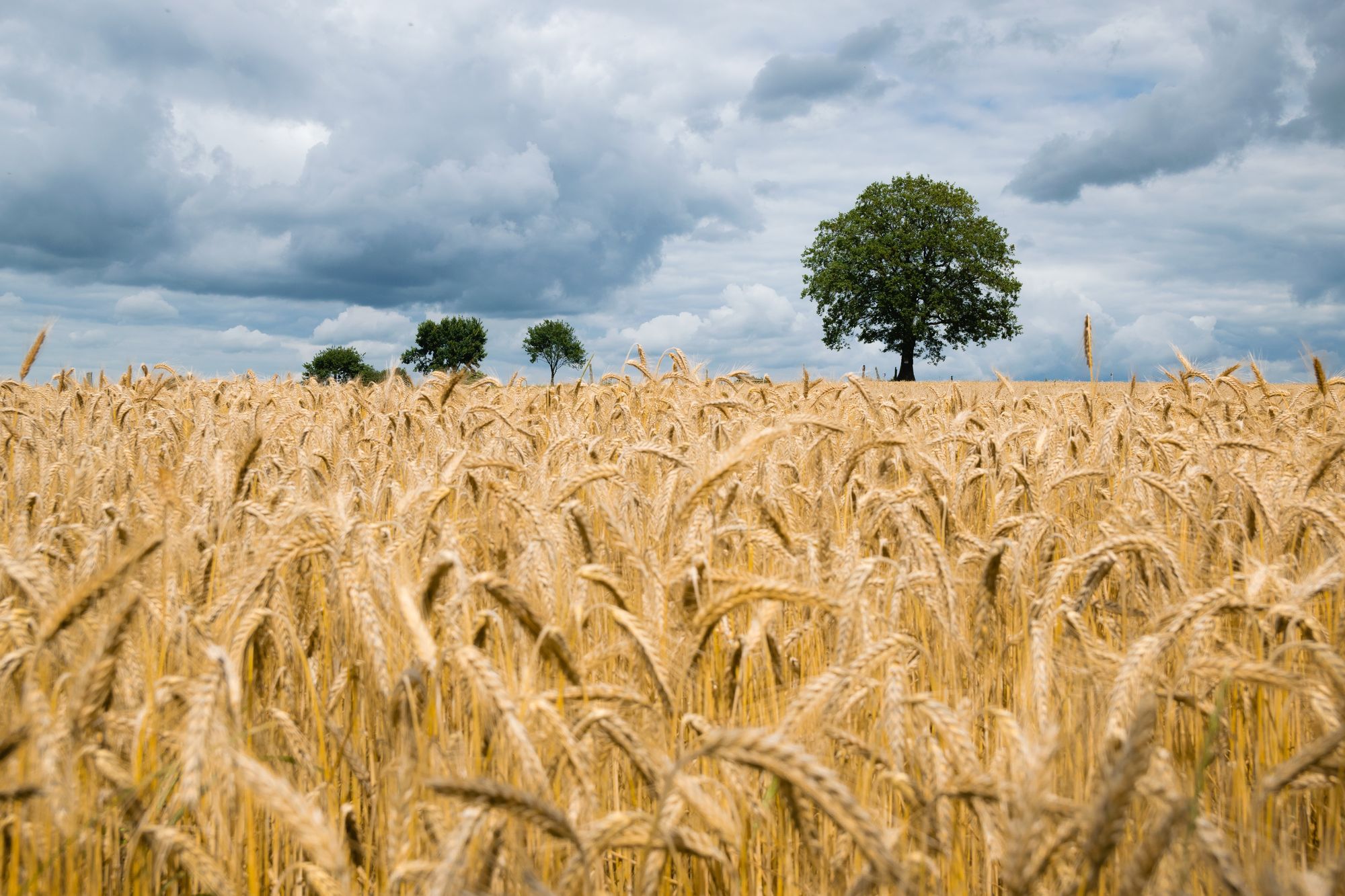
Whisky can be made from different grains, i.e. barley, corn, wheat, or rye.
Malt whiskies are made from barley.
For malt whiskies, the objective of the malting stage is to convert the barley into malt. The process involves steeping, germinating, and drying the barley.
Non-malt whiskies also have some use for malted barley, as we will see in the next stage.
Mashing.
The objective of this stage is to extract sugars from whichever grain is being used to make the whisky. Here, the grain is mixed with hot water, in a vessel called a 'mash tun'. Malted barley is also added at this stage, even for non-malt whiskies.
The starch in the cooked grains is converted (by the malted barley) into sugars. The resulting porridge-like mixture is called a ‘mash’. The liquid produced from straining the mash (and leaving the grains behind) is called ‘wort’.
Fermentation.
The objective here is to convert the sugar in the mash (or wort) into alcohol and carbon dioxide. At this stage, yeast is added to the mash (or wort).
Fermentation takes place in large vats, known as ‘wash backs’, and lasts for anything between two and four days.
The final product is known as ‘distiller’s beer’, or ‘wash’, and it generally contains an ABV of around 7 - 10%. (‘ABV’ stands for ‘alcohol by volume’. This is the standard measurement unit for the level of alcohol in any given volume of an alcoholic drink.)
This distiller’s beer is not the everyday beer you know and love. It is not intended as a finished product, and, in fact, does not look like the normal beer you’d see in a supermarket or pub.
You may wonder, why go to the trouble of creating this distiller’s beer? Why not just instead get a normal, everyday beer off the shelf, distill it, and create a whisky out of that? Well, some distillers have been doing just that. See this article for some fine examples of whiskies distilled in this way.
Distillation.
The next step is to distill the ‘wash’ (i.e. the distiller’s beer).
The idea behind distillation is to heat the wash so as to transform the alcohol into a vapour. This vapour is then cooled, and then condensed into a liquid state. Distillation turns the alcohol (but not the water) into a vapour, and increases the alcohol content.
Whisky distillation is commonly done in either a pot still or a column still (the latter is sometimes called a Coffey still). For Scotch whiskies, use of the pot still is quite common, more than for the column still.
Scotch whiskies are generally distilled twice, using the pot still. In the first stage, the alcohol is separated from the fermented liquid, and the yeast residue and other matter are done away with. The resulting liquid (called ‘low wines’) then undergoes a second distillation. When the liquid becomes of suitable quality, that good part is collected in a so-called Spirit Receiver.
The distillation stage also contributes to the flavour of the whisky.
There are several factors responsible for this. Let's take a look at two of them, namely: the shape of the still, and the distillery's own processes.
The shape of the still.
For one thing, the shape of the still has an impact on the intensity of the flavour. For example, the Glenmorangie distillery uses tall, thin stills. The shape of the still makes the whiskies lighter in taste, because the heavier 'ingredients' stay at the bottom of the still, and do not fully rise to the top. You get the opposite effect with distilleries that use broader stills. That shape gives a stronger flavour to the whisky.
The distillery's processes.
Distilleries also have certain practices or characteristics that impact the taste of the whisky. A good example is the Clynelish distillery in Scotland. The waxiness of the Clynelish 14 Year Old is down to the natural precipitation of oils in the tank. Tanks are normally cleaned periodically, but the distillery discovered that cleaning their tanks removed the distinctive waxy taste of the whisky, and so they organised their processes so as not to lose this effect.
A Note About Tennessee Whiskey
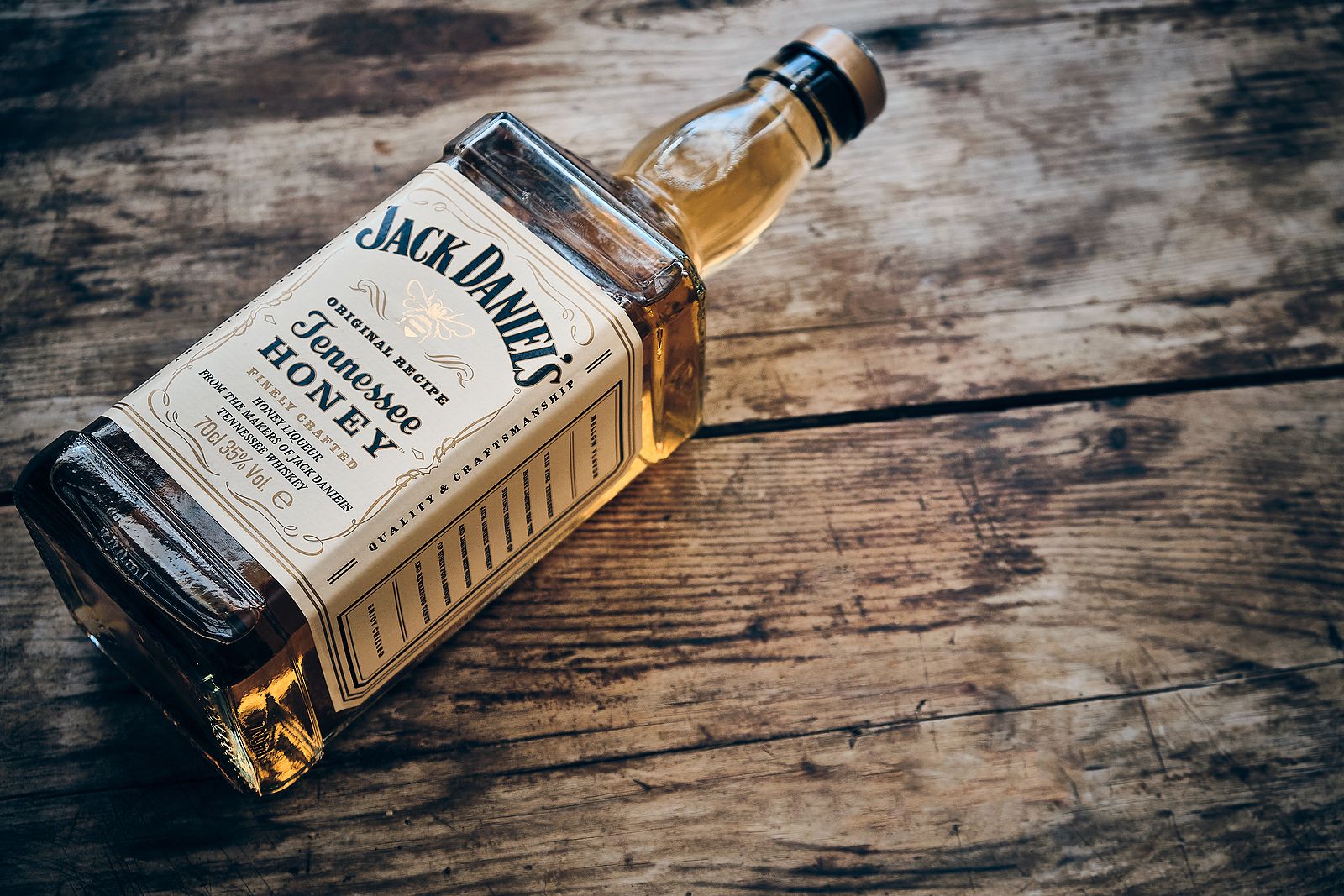
There is an additional step for Tennessee whiskies. After distillation is complete, and before the liquid is poured into the barrels for ageing (see next stage, below), the liquid must be filtered through, or steeped in, charcoal. This is known as the ‘Lincoln County Process’. It got its name from Lincoln County in the USA, where the Jack Daniels distillery was once based.
Ageing (or Maturation)
The high wine (i.e. the ‘good’ liquid you get from the distillation stage) is then poured into wooden barrels (usually oak barrels) and left to mature. At this point, the liquid contains a rather high degree of alcohol. This is generally around the 70% mark. For American whiskies, the distillation should result in no higher than 80% ABV.
Water is added to the high wine to temper the alcohol content. Normally, in the case of Scotch whiskies, the aim is for at least 65% ABV. During the ageing process, the whisky will either absorb or lose water, depending on the prevailing temperatures. This has an effect on the nature of the final product. Whiskies that lose water obviously tend to be stronger in alcohol content. This is generally the case for whiskies that are aged in warm temperatures, such as those from the United States of America. On the other hand, the cooler Scottish temperatures (plus wet conditions) generally result in absorption of water, with the resulting reduction in alcohol intensity.
The maturation process plays a huge part in giving whiskies their different flavours. Some factors include: how long the whisky is aged in the barrel, and the type of barrel in which the whisky is aged. Let's look at those two factors.
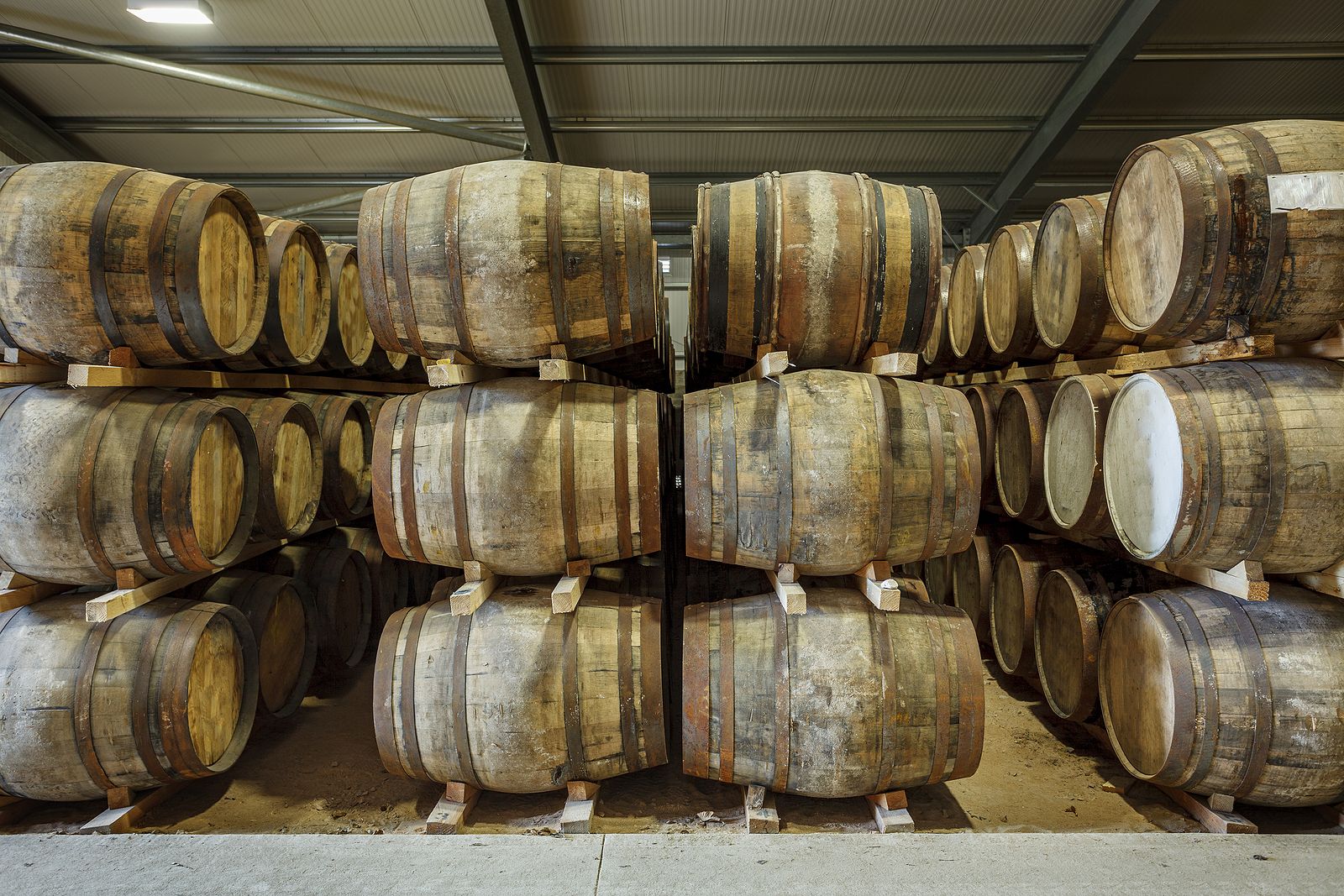
(a) How long the whisky is aged in the barrel.
In general, a whisky would need a maturation time of at least three to four years, although, of course, many are aged for much longer. In some countries, there is a minimum stipulation as to how long a whisky should be aged. (For example, a Scotch whisky must be aged in oak casks, in Scotland, for a minimum of three years.) Next to that, a distiller would also have its own preferences, depending on the type of whisky.
(b) The type of barrel in which the whisky is aged.
For example, whiskies from the United States must be aged in new (i.e. not reused) charred oak barrels. (This does not apply to corn whiskies, as these do not have to be aged.) On the other hand, Scotch whiskies tend to be aged in previously used barrels. Often these barrels will have been used to hold other spirits (e.g. bourbon, port, sherry, and wine), and this gives more flavour to the whisky. For example, the Arran Sherry Cask (aka 'The Bodega') was, as its name indicates, matured in a sherry cask.
It is also possible to mature a whisky in a cask, and then 'finish' it in another. An example is the Balvennie 14 Y Caribbean Cask. This outstanding whisky was matured in an oak cask, but later finished in a cask that previously contained Caribbean rum.
The wood of the cask can also give flavour and colour to the whiskey.
The size of the cask also has an impact. Where the cask is smaller, there is more contact between the wood and the whisky. This has an impact on the flavour and colour of the whisky.
Also if the casks are stored in humid conditions, the barrels will expand and contract, causing more contact between wood and whisky, This will impart a woody flavour.
An amount of whisky typically evaporates during the ageing process. This evaporated whisky is generally known as ‘the Angel’s Share’. This evaporation reduces the strength of the whisky. There will be more of such evaporation in hotter and dryer environments than would be the case in cooler environments. The evaporation also has an effect on the flavour of the whisky.
Blending.
Blending refers to the process by which whiskies from different batches are mixed. This helps to standardise the product (i.e. to make it more uniform), and can also lead to a better flavour. At this stage, other flavours etc. may also be added to the whisky.
Bottling.
Finally, the whisky is bottled.
In an upcoming post, we will look at whisky bottles, and I will explain the terms used on the labels.
I hope you enjoyed this quick read on the making of whisky. More whisky-flavored articles are on the way. Subscribe to the newsletter so you don't miss them.
